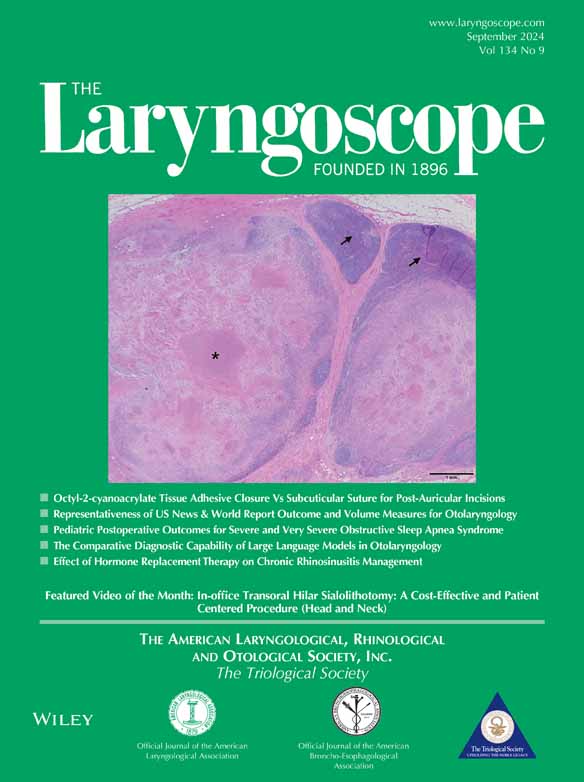Robotic Neck Dissection in Head and Neck Cancer via Modified BABA Technique
The authors have no funding, financial relationships, or conflicts of interest to disclose.
Abstract
Introduction
Neck dissection forms an important component in the surgical management of head and neck cancers. By using the conventional techniques of neck dissection, a conspicuous scar is inevitable for the patients. The development of robotic assisted neck dissection provides for a scar-free neck along with good oncological and functional outcomes.
Methods
A prospective observational study was conducted in our institute from 2020 March to 2022 March, where robotic-assisted neck dissections performed via the modified bilateral axillo-breast insufflation technique.
Results
Eighty-two patients underwent robotic neck dissections in our institute. Notably, 79 patients were treatment-naïve. The average docking time was 12 min and console time was 160 ± 15 min. The mean lymph node yield was 28.2. The average post-operative stay was 5.6 days. The average follow-up was noted to be 6.4 months. The mean cosmetic satisfaction score in our patients was 4.45. Only one patient presented with nodal recurrence, who was identified as a defaulter for adjuvant treatment. Robotic neck dissection gives similar functional and oncological outcomes as compared with conventional neck dissection. Patients had excellent cosmetic satisfaction following the procedure. The limitations of these techniques include high cost of procedure and longer operating time. This is a level IV evidence study.
Conclusion
Although good oncological, functional, and cosmetic outcomes have been attained in robotic assisted neck dissection, further randomized controlled studies need to be conducted to justify the added costs, cosmetic advantage, and the time taken.
Level of Evidence
IV Laryngoscope, 134:4045–4051, 2024




